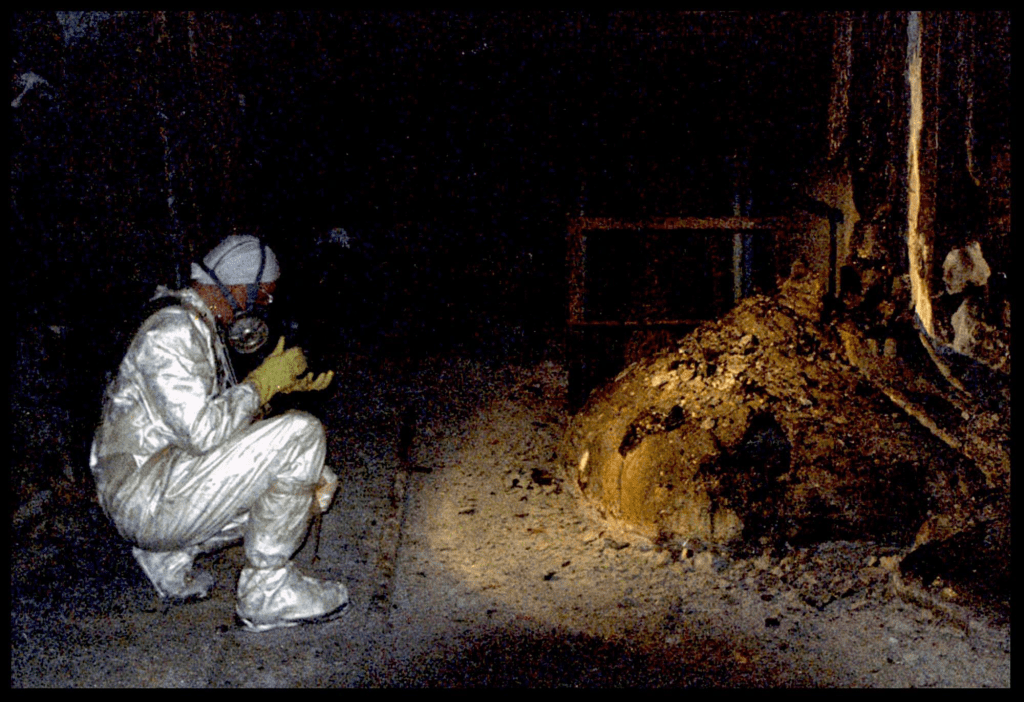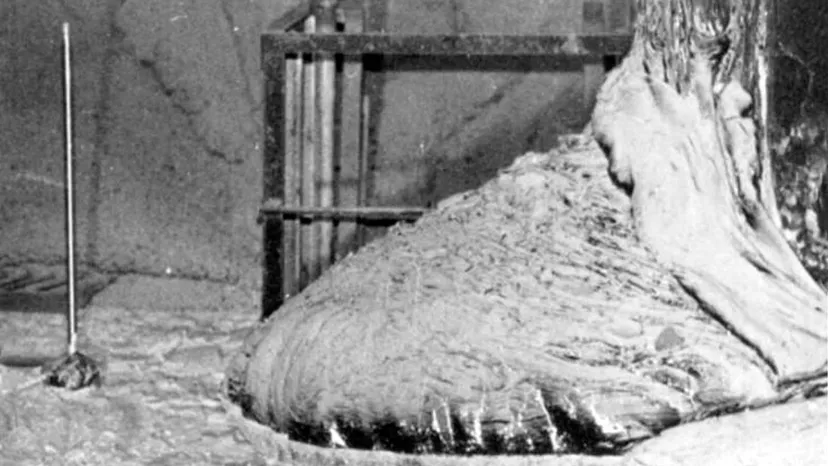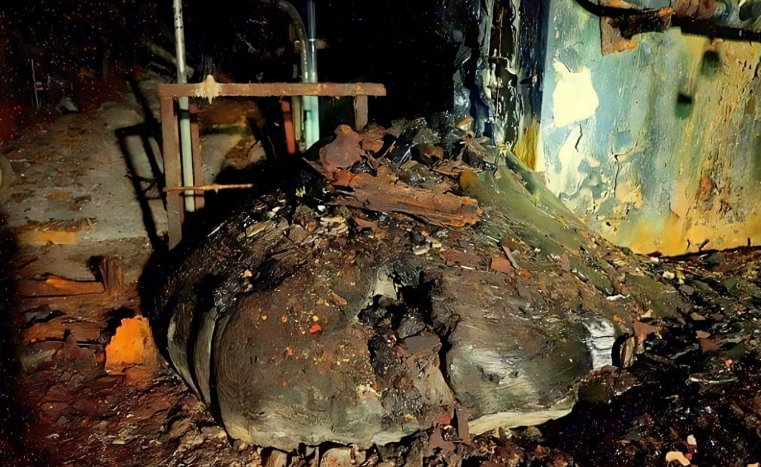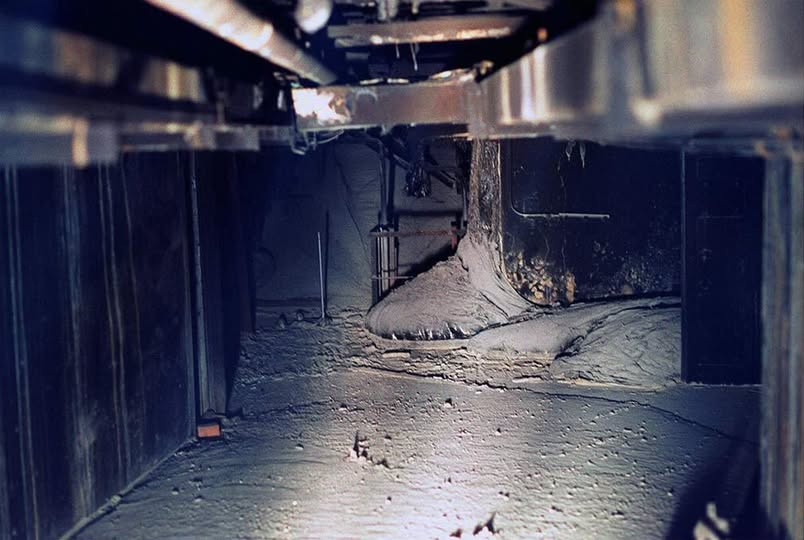In April 1986, the world witnessed one of the most catastrophic nuclear disasters in history the Chernobyl meltdown. Fires, explosions, radioactive clouds it was chaos unleashed. But buried deep within Reactor No. 4, beneath layers of twisted metal and crumbling concrete, lies something even more terrifying than the explosion itself: the Elephant’s Foot.
This deadly mass of radioactive material became one of the most dangerous objects ever created by mankind. It didn’t just burn it glowed. Cameras couldn’t capture it. Film would melt. And even today, nearly four decades later, its legacy continues to haunt those who remember.

What Is the Elephant’s Foot?
The Elephant’s Foot is a massive formation of corium molten nuclear fuel mixed with sand, concrete, steel, and other reactor materials. During the meltdown, intense heat liquefied the core’s contents. As this hellish mixture poured downward, it cooled and hardened into an oddly textured lump, resembling an elephant’s wrinkled skin hence the nickname.
But make no mistake this wasn’t just some quirky byproduct. It was a silent killer.

Hotter Than Hell: Radiation at Deadly Levels
When first discovered in late 1986, the Elephant’s Foot was emitting an astonishing 10,000 roentgens per hour. To put that in perspective: just 500 roentgens over five hours is a fatal dose. Standing near the mass for just 60 seconds would be enough to kill you within days. Even robotics sent to inspect it would fail batteries drained, circuits fried, and mechanical parts melted.
Video:
The Elephant’s Foot – Corpse of Chernobyl
Early photos of the Elephant’s Foot weren’t taken by brave photographers but by remote-controlled equipment or crude makeshift mirrors. Some images appear distorted or blurred not by human error, but because the radiation literally warped the film.
Why Was It So Dangerous?
The real danger of the Elephant’s Foot wasn’t just its deadly radiation levels but its potential to keep burning through the earth. There were fears that if it continued its descent, it could reach groundwater and trigger another explosion this time, possibly radioactive steam that would spread contamination even further.
Fortunately, that scenario never came to pass. The mixture eventually cooled and solidified. Still, it remained highly lethal for years.

The Man Who Photographed It and Lived
Incredibly, one man managed to get close enough to snap a now-famous photo of the Elephant’s Foot. His name was Artur Korneyev, a Soviet scientist who led radiation inspections around the site. He was exposed to massive levels of radiation throughout his work at Chernobyl, and though he later developed health complications, he survived longer than anyone expected.
Video:
What is the Elephants Foot?
Korneyev once said, “It’s important to see the face of the enemy.” To him, the Elephant’s Foot was not just a hazard it was a lesson, a grim reminder of human error and hubris.
Where Is the Elephant’s Foot Today?
The Elephant’s Foot still exists. It sits under the remains of Reactor 4, now sealed beneath a steel sarcophagus called the New Safe Confinement. Time has reduced its radiation output significantly, but it’s still not something you’d want to get cozy with. Today, it emits about 800 roentgens per hour still extremely hazardous.
Some experts even monitor it for signs of nuclear reactions, known as “neutron flashes,” though they remain rare and weak. It’s stable for now.

The Legacy That Still Glows
The Elephant’s Foot is more than just a radioactive curiosity. It’s a terrifying symbol of what can happen when technology is mismanaged and safety is ignored. The Chernobyl disaster claimed lives, shattered families, and devastated entire regions. But the Foot endures silent, still, and glowing with the memory of that terrible day.
Even decades later, the lesson remains: radiation doesn’t forgive, and neither does time.


